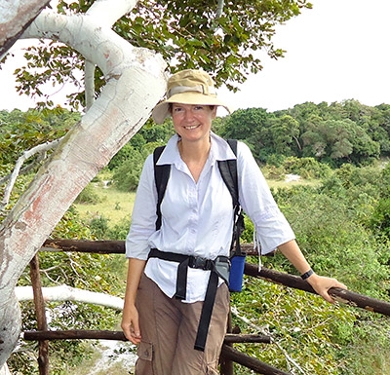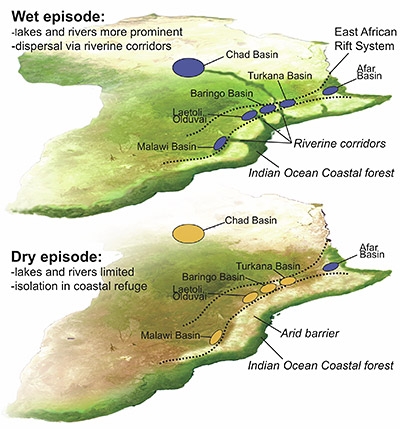Veni for climate change and human evolution
Leiden archaeologist José Joordens has been awarded a Veni grant to develop her research on the role of climate change in early hominin evolution.

The Great Rift Valley in Africa is a real treasure trove for discovering early human fossils. The fossils found in this part of Africa have determined our view of human evolution. But was the Great Rift Valley really the place where evolution took place or just a place where fossils are well preserved and easily found? This question is key in Joordens’ research.
Coastal refugium?
For the past 5 million years, Africa’s climate has been characterised by a series of alternating wet and dry periods. Joordens proposes that the Indian Ocean coastal forest was a refuge for early hominins –and other water-dependent fauna- during dry periods. When environmental conditions improved during wet climate periods, these species could expand from the coast via riverine corridors to colonise basins in the inland East African Rift System. It is therefore expected that their fossils are present in Rift sediments deposited during wet periods, and absent from those deposited during wet periods.
International collaboration

Joordens will study her novel climate-evolution hypothesis in close collaboration with colleagues from e.g. Utrecht University, Rutgers University, George Washington University (both USA), the MNHN in Paris and the Max Planck Institute in Leipzig. The project aims to answer the following questions: when exactly did the wet periods occur? Does this timing match with the pattern in fossil occurrences? Can we trace the presence and absence of riverine corridors in the genetics of modern freshwater fish?
Ecological perspective
This study aims to tackle hominin evolution from an ecological and biogeographical perspective, providing the spatial dimension that has been lacking thus far. And ultimately, it may become possible to predict the locations of new hominin fossil sites!
